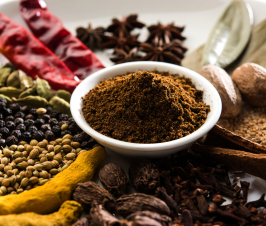First thing, let me say that the advent of antibiotics is one of the biggest miracles of modern medicine. They are an invaluable tool to combat bacterial infections. But… while antibiotics have their spot in our toolbox, we are experiencing an epidemic of antibiotic resistant bugs and chronic diseases associated with their use/overuse. Diet, lifestyle, supplements, and herbs are also valuable tools for fending off bacterial infections without the risks that antibiotics can pose.
Why We Should Exercise Caution When Deciding To Use Antibiotics
Antibiotics have been heavily overused. Often, patients with infections which are viral (antibiotics are only effective against bacteria) or would resolve on their own are given antibiotics as a matter of course. One Harvard study published in 2013 determined that 60% of sore throat patients and 73% of acute bronchitis patients were prescribed antibiotics. This, even though the textbook answer is that only about 10% of sore throat cases are bacterial and acute bronchitis, almost never is. (1) This happens for a number of reasons, but it’s usually a combination of the patient’s expectations/demands and a “better safe than sorry” attitude from the doctor. This unnecessary and inappropriate prescription of antibiotics has given rise to the worrisome, drug-resistant superbugs that occasionally make the news. Each year as many as 2 million people in the US become infected with antibiotic resistant bacteria resulting in at least 23,000 deaths and the numbers are rising worldwide. A recent UN meeting about global health in 2016 called for prioritization of this worldwide epidemic of antibiotic resistance. The CDC started a Get Smartcampaign to raise awareness about unnecessary and inappropriate antibiotic prescriptions. (2)
“Antibiotic resistance is a growing problem, both in the United States and across the world. The main driving factors behind antibiotic resistance are the overuse and misuse of antibiotics.”
Antibiotics also negatively impact the gut microbiome and have been associated with many chronic diseases. The gut microbiome is crucial for immune regulation, digestive health, metabolic maintenance, cardiovascular and neurological health. Many studies have found a connection between antibiotic use in early life and chronic disease in later life. A study out of the University of Minnesota in 2015 found that antibiotic use in infancy increases the risk for certain diseases later in life. (2) The study highlights how the use of antibiotics may eradicate key gut bacteria that help immune cells in the prevention of allergies and how antibiotic-induced changes in the gut microbiota resulted in increased levels of short-chain fatty acids that affect metabolism, increasing obesity risk. This was also a key finding in a recent study out of the University of British Columbia in 2014 where researchers found that different antibiotics killed different strains of gut flora which in turn, resulted in different diseases because of the lost strain. (3) These studies show the importance of a robust and diverse microbiome. Remove or decrease just one strain and the body suffers. Interesting research from the University of Helsinki in 2016 looked at 142 Finnish children, aged 2 to 7 years. Researchers investigated how many courses of antibiotics the children had received in their lifetime and how the use of antibiotics impacted their intestinal microbiota. They found that the more rounds of antibiotics, particularly the class of antibiotics called macrolides such as azithromycin or clarithromycin, a child has in the first two years of life the greater the risk for asthma, obesity and metabolic diseases. (4)
immune cells in the prevention of allergies and how antibiotic-induced changes in the gut microbiota resulted in increased levels of short-chain fatty acids that affect metabolism, increasing obesity risk. This was also a key finding in a recent study out of the University of British Columbia in 2014 where researchers found that different antibiotics killed different strains of gut flora which in turn, resulted in different diseases because of the lost strain. (3) These studies show the importance of a robust and diverse microbiome. Remove or decrease just one strain and the body suffers. Interesting research from the University of Helsinki in 2016 looked at 142 Finnish children, aged 2 to 7 years. Researchers investigated how many courses of antibiotics the children had received in their lifetime and how the use of antibiotics impacted their intestinal microbiota. They found that the more rounds of antibiotics, particularly the class of antibiotics called macrolides such as azithromycin or clarithromycin, a child has in the first two years of life the greater the risk for asthma, obesity and metabolic diseases. (4)
What Are The Alternatives?
Keeping the immune system balanced to prevent or prepare for a bacterial infection is the first step to avoiding antibiotics. Plenty of exercise and movement balanced with enough rest and down time are vital for keeping the immune system healthy. A diet rich in fresh fruits and vegetables that includes a rainbow of colors ensures that you are getting the phytonutrients and antioxidants necessary for a strong immune system. Protein is an essential building block for the production of immune cells so getting enough in your diet is crucial. Research has shown that adequate vitamin D3, zinc and probiotics in the diet or through supplements is also a great way to keep immunity up. (5,6,7) Our first line of defense against bacterial infections are the mucous membranes in our nose and mouth/airway and keeping them moist is important so they can effectively defend against germs. Hydration is key to maintaining moisture in those tissues so drinking enough water is essential. It’s also important to incorporate time in nature and stress management tools. Both have been shown to dramatically regulate the immune system. Even with the best intentions and practices we’re bound to get a bacterial infection sometime and then what? Below are six alternatives to antibiotics that are safe for both adults and children:
Propolis- Propolis is a substance that honey bees make with a resin exudate gathered from tree buds or other plant sources. Research has demonstrated its powerful antibiotic properties. (8,9,10,11) Propolis is rich in flavonoids which makes it a powerful antimicrobial agent. Propolis is great for fighting bacteria, viruses, fungi and helping wounds heal.
Echinacea- Echinacea is a North American cone flower that has been used medicinally for hundreds of years. Echinacea has long been used to fight infections and held a special place in medicine until the advent of modern day antibiotics. Research has confirmed the important antibiotic nature of Echinacea. (12,13)
Garlic- Garlic is a wonderful antibiotic that fends off the harmful bacteria while leaving the beneficial bacteria unharmed. Metabolites are released when the cell wall of garlic is broken that act as a defense against bacteria and viruses. (14, 15)
Elderberry- Elderberry has powerful antimicrobial properties making it a great choice for both bacterial and viral infections. (16) The berries also contain vitamins A and C, and the flavonoids quercetin, anthocyanin and rutin, all of which boost immune function. Elderberry comes in a great tasting liquid syrup form making it an easy option for kids. We put a teaspoon or so in seltzer water and the kids think elderberry sodas are a perfect treat!
Ginger- Ginger is another plant that has been shown effective against several multidrug resistant bacteria. It comes in a variety of forms from fresh, dried tea, syrups, tinctures and even fermented sodas from ginger bugs which makes it an easy option to find something that works for you. (17)
Usnea- Usnea is a lichen that grows from tree branches in wet climates. The common name for Usnea is Old Man’s Beard because its light green strands resemble a beard. It is hard to pull the immune properties of out of Usnea with tea or capsules so an alcohol extract works best. A recent study from 2016 showed that Usnea was effective for treating several strains of multidrug resistant bacteria. (18)
I love using these natural medicines to treat bacterial as well as viral infections. Nature offers an abundance of medicines without the side effects of prescription antibiotics. While antibiotics may be necessary in certain cases, it is good to have these alternatives to antibiotics on hand. If you suspect you or your child is suffering from a bacterial infection make sure to work with a qualified healthcare practitioner to see if any alternative treatments might be right for you.
 Catherine Clinton ND, is a graduate of the National College of Natural Medicine (NCNM) in Portland, Oregon. She is a board licensed naturopathic doctor currently practicing at her private clinic in Eugene, Oregon.
Catherine Clinton ND, is a graduate of the National College of Natural Medicine (NCNM) in Portland, Oregon. She is a board licensed naturopathic doctor currently practicing at her private clinic in Eugene, Oregon.
Dr. Clinton is a speaker on integrative medicine and gut health and has authored several publications in those areas. She is founder of WellFuture, a line of nutritional supplements for infants and children that uses organic, whole food ingredients and the greenest, bioavailable nutrients.
When in medical school Catherine was diagnosed with an autoimmune disease that effects the gastrointestinal tract, leaving her with a special interest in autoimmune diseases and gastrointestinal conditions. Accessing how the multiple systems of the body are working together is a vital piece of Dr. Clinton’s practice. With a practice focused on gastrointestinal and immune health Dr. Clinton utilizes the latest in functional medicine combined with nutrition, herbal medicine and lifestyle interventions to treat a variety of digestive complaints, autoimmune diseases and pediatric conditions.
With the birth of her own children Dr. Clinton became passionate about the prevention of these chronic diseases and conditions by addressing the immune systems and gastrointestinal health of our children. Catherine is deeply committed to the optimal health of babies, children and families everywhere and loves to interact with her readers through her blog and social media. Her blog can be found at www.wellfuture.com/blogs/news
References:
- Michael L. Barnett. Antibiotic Prescribing to Adults With Sore Throat in the United States, 1997-2010. JAMA Internal Medicine, 2013; DOI:10.1001/jamainternmed.2013.11673
- http://www.cdc.gov/getsmart/
- Pajau Vangay, Tonya Ward, Jeffrey S. Gerber, Dan Knights. Antibiotics, Pediatric Dysbiosis, and Disease. Cell Host & Microbe, 2015
- Shannon L. Russell, Matthew J. Gold, Lisa A. Reynolds, Benjamin P. Willing, Pedro Dimitriu, Lisa Thorson, Stephen A. Redpath, Georgia Perona-Wright, Marie-Renée Blanchet, William W. Mohn, B. Brett Finlay, Kelly M. McNagny. Perinatal antibiotic-induced shifts in gut microbiota have differential effects on inflammatory lung diseases. Journal of Allergy and Clinical Immunology, 2014
- Katri Korpela, Anne Salonen, Lauri J. Virta, Riina A. Kekkonen, Kristoffer Forslund, Peer Bork, Willem M. de Vos. Intestinal microbiome is related to lifetime antibiotic use in Finnish pre-school children. Nature Communications, 2016
- Anna-Carin Norlin, Susanne Hansen, Emilie Wahren-Borgström, Carl Granert, Linda Björkhem-Bergman, and Peter Bergman Vitamin D3 Supplementation and Antibiotic Consumption – Results from a Prospective, Observational Study at an Immune-Deficiency Unit in Sweden. PLoS One. 2016; 11(9): e0163451.
- John K Crane, Jackie E Broome, Ryan M Reddinger, and Benjamin B Werth. Zinc protects against shiga-toxigenic Escherichia coli by acting on host tissues as well as on bacteria. BMC Microbiol. 2014; 14: 145.
- Gregor Reid, BSc (Hons) PhD MBA. Probiotics to Prevent the Need For, and Augment the Use Of, Antibiotics Can J Infect Dis Med Microbiol. 2006 Sep-Oct; 17(5): 291–295.
- Al-Waili N, Al-Ghamdi A, Ansari MJ, Al-Attal Y, Salom K. Synergistic effects of honey and propolis toward drug multi-resistant Staphylococcus aureus, Escherichia coli and Candida albicans isolates in single and polymicrobial cultures. Int J Med Sci. 2012;9(9):793-800. doi: 10.7150/ijms.4722.
- Cushnie TP, Lamb AJ. Antimicrobial activity of flavonoids. Int J Antimicrob Agents.Int J Antimicrob Agents. 2005 Nov;26(5):343-56.
- Qiao Z, Chen R. Isolation and identification of antibiotic constituents of propolis from Henan. Zhongguo Zhong Yao Za Zhi. 1991 Aug;16(8):481-2, 512.
- Grange, J. M. and Davey, R. W. “Antibacterial properties of propolis (bee glue).” J R.Soc Med 1990;83:159-160.
- Sharma SM, Anderson M, Schoop SR, Hudson JB. Bactericidal and anti-inflammatory properties of a standardized Echinacea extract (Echinaforce): dual actions against respiratory bacteria. Phytomedicine. 2010 Jul;17(8-9):563-8.
- Sullivan AM1, Laba JG, Moore JA, Lee TD. Echinacea-induced macrophage activation. Immunopharmacol Immunotoxicol. 2008;30(3):553-74.
- Saha SK, Saha S, Hossain MA, Paul SK. In vitro assessment of antibacterial effect of garlic (allium sativum) extracts on pseudomonas aeruginosa. Mymensingh Med J. 2015 Apr;24(2):222-32.
- Saha S, Saha SK, Hossain MA, Paul SK, Gomes RR, Imtiaz M, Islam MM, Nahar H, Begum SA, Mirza TT. Anti-Bacterial effect of Aqueous Garlic Extract (AGE) determined by Disc Diffusion Method against Escherichia coli. Mymensingh Med J. 2016 Jan;25(1):23-6.
- Salehzadeh A, Asadpour L, Naeemi AS, Houshmand E. Antimicrobial activity of methanolic extracts of Sambucus ebulus and Urtica dioica against clinical isolates of methicillin resistant Staphylococcus aureus. Afr J Tradit Complement Altern Med. 2014 Aug 23;11(5):38-40.
- Revati S, Bipin C, Chitra PB, Minakshi B. In vitro antibacterial activity of seven Indian spices against high level gentamicin resistant strains of enterococci. Arch Med Sci. 2015 Aug 12;11(4):863-8.
- Tozatti MG, Ferreira DS, Flauzino LG, Moraes Tda S, Martins CH, Groppo M, Andrade e Silva ML, Januário AH, Pauletti PM, Cunhaa WR. Activity of the Lichen Usnea steineri and its Major Metabolites against Gram-positive, Multidrug-resistant Bacteria. Nat Prod Commun. 2016 Apr;11(4):493-6.

















